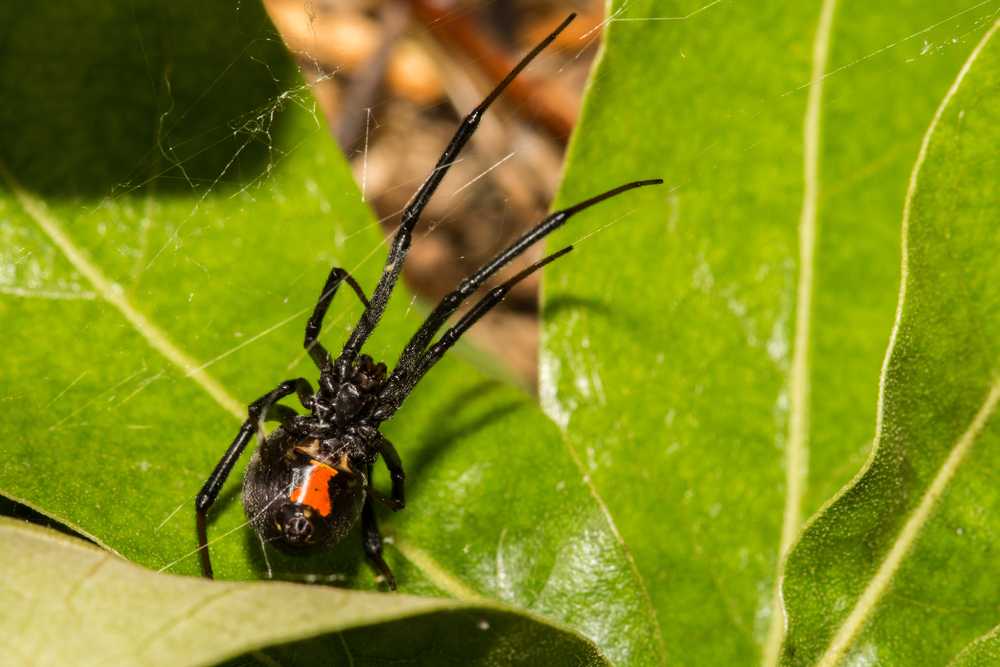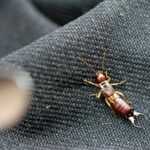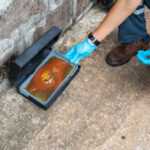Where Black Widows Live: Typical Habitats & Hiding Spots
Find out where black widows live, the places they hide, and simple safety tips to protect your home and family from these venomous spiders.
Black Widows: Where Do Black Widows Live?
Black widows establish their optimal habitats in specific environments, including warm areas with hidden spaces under rocks, wood piles, and dark indoor locations such as crawl spaces, basements, and garages.
These spiders favor dry environments with ample food availability, which explains their abundance in regions such as California, Texas, and similar areas across North America.
They live in concealed spots both inside and outside buildings, including woodpiles, hollow logs, cardboard boxes, basements, and garages, often favoring dark corners and sheltered spots to avoid human activity.
The likelihood of black widow infestations decreases when entry points are sealed, clutter is minimized, and natural repellents, such as peppermint and tea tree essential oils, are used.
Preferred Climates for Black Widow Spiders
Black widow spiders primarily inhabit warm environments and thrive in states such as California, Texas, Georgia, and Florida. The climates in these regions support stable breeding populations of both female and male black widows. The deserts of the American Southwest also serve as key habitats for venomous species such as the southern widow (Latrodectus mactans), the northern widow, and the western black widow, whose dry conditions match these spiders’ survival needs.
Black widows occur in deserts, humid forests, and open grasslands. These habitats provide a steady supply of insect prey. Thanks to their adaptability, black widows can thrive across deserts, dense forests, and grasslands by selecting areas with stable, warm conditions.
Outdoor Habitats of Black Widow Spiders
Black widows build their webs in hidden, undisturbed outdoor areas that offer protection and concealment. Typical habitats include woodpiles, hollow logs, under rocks, gravel, mulch, loose bark, small trees, and bushes. They also use man-made structures as preferred hiding places.
These spiders choose shaded areas with minimal disturbance from humans and animals to protect their webs and survive peacefully. Understanding these outdoor habitats helps people detect black widow presence and develop effective control strategies near residential areas.
Indoor Habitats of Black Widow Spiders
Inside homes, black widows tend to hide in dark spaces such as crawl spaces, basements, garages, attics, and cluttered areas like cardboard boxes and rarely used storage. These locations provide seclusion and protection, with minimal human traffic and numerous hiding spots.
Black widows often enter buildings through firewood deliveries, open entryways, and window openings. They settle in hidden spaces that provide shelter from harsh weather conditions and human activity. Homeowners aware of these typical hiding spots can take preventive measures to avoid infestations.
Factors Attracting Black Widows to Homes
Black widow spiders are attracted to homes primarily due to abundant food sources and suitable web-building locations. They construct webs near insects drawn to outdoor lighting, ensuring a steady food supply. Accumulated clutter creates an environment with multiple hiding spots and web-building areas, making homes more appealing to black widows.
Eliminating clutter and maintaining regular cleaning reduces the attractiveness of homes to these venomous spiders. Awareness of these factors enables effective strategies to prevent black widow infestations.
Differences Between Northern and Southern Black Widows
Northern black widow spiders (Latrodectus variolus) and southern black widows differ in body markings and preferred habitats. The southern black widow (Latrodectus mactans) displays a bright orange to bright red hourglass marking on its abdomen, serving as a clear identification marker. Northern black widows have a less prominent hourglass pattern but maintain a shiny black, jet black body color with red spots.
Northern black widows typically inhabit areas with limited plant growth, including stumps, hollow logs, and debris piles that provide protective cover and food resources. Southern black widows are found in the warmer regions of the Southern United States, where the climate supports their population growth.
Female southern black widows reach a body length of 8 to 13 millimeters, larger than that of northern black widows. Despite these differences, females of both species exhibit similar behaviors and ecological roles as dangerous predators in their native habitats.
Urban Adaptation of Black Widows
Black widows have successfully adapted to urban environments by selecting protected areas that shield them from predators and harsh weather. Garages, sheds, and other isolated spaces in urban settings provide shelter and access to food sources, enabling black widows to thrive.
These spiders prefer urban locations with minimal human contact, allowing them to sustain populations even in densely populated areas. Understanding their urban behavior assists in developing better control strategies to keep residential areas safe.
Seasonal Activity Patterns of Black Widow Spiders
Black widow spiders, along with other cobweb spiders, show increased activity during the warmer spring and summer months. This rise in activity supports mating, egg-laying, and the hatching of eggs. Female black widows produce egg sacs from which spiderlings emerge, dispersing to new locations.
In autumn, black widows may enter homes as outdoor conditions become less favorable. They seek shelter from harsh weather and secure stable winter habitats. During winter, their activity decreases significantly as they enter a state of dormancy.
Recognizing these seasonal patterns helps predict black widow presence and implement timely medical treatment and control measures to reduce widow bites and other spider bites.
Preventive Measures to Avoid Infestations
Effective prevention of black widow infestations includes:
- Spraying a mixture of peppermint and tea tree essential oils in areas where black widows may build nests.
- Keeping homes free of clutter and maintaining regular cleaning to eliminate hiding spots such as cardboard boxes and dark corners.
- Sealing all window, door openings, and foundation gaps to prevent spider entry.
- Regularly inspecting outdoor spaces such as woodpiles, hollow logs, and gardens to reduce spider habitats.
- Using insect-deterring outdoor lighting, like yellow or sodium vapor bulbs, to decrease insect attraction and thus reduce black widow presence.
If black widow infestations persist, contacting professional pest control services is recommended. The expertise can help create a safe, spider-free environment.
Managing black widow spiders requires understanding where black widows live, their natural habitats, behaviors, and attraction factors. Awareness of differences between northern and southern black widows, their urban adaptation, and seasonal activity supports effective control.
Combining essential oil repellents with environmental modifications like lighting changes and decluttering reduces black widow encounters. For ongoing infestations, professional pest control intervention is the most effective solution.
Frequently Asked Questions
What environmental conditions do black widow spiders prefer?
Black widows thrive in warm environments, including humid forests, dry deserts, and urban sheltered spots, with high populations in California, Texas, Georgia, and Florida. Warm temperatures and suitable humidity are essential for their survival and activity.
Where do black widow spiders typically live outdoors?
They inhabit hidden outdoor spaces such as woodpiles, rocks, gravel, mulch, small trees, bushes, and hollow logs, which provide peaceful conditions for survival.
Where do black widows hide inside buildings?
Inside homes, they prefer dark, secluded areas like crawl spaces, garages, basements, attics, and cardboard boxes. Sealing entry points is crucial to prevent their access.
Why do black widows choose to live in homes?
Homes offer abundant food sources and suitable web-building sites, especially in cluttered, dark spaces. Decluttering and sealing entry points help prevent infestations.
How can I prevent black widow spider infestations?
Regular cleaning, decluttering, using natural repellents, modifying outdoor lighting, and sealing entry points effectively reduce black widow presence. Professional pest control is advisable for persistent problems.
Are black widow spider bites dangerous?
While black widow bites can cause severe pain, muscle cramps, burning sensation, difficulty breathing, and blood pressure changes, they are rarely fatal with prompt medical attention and treatment. Severe symptoms require immediate medical treatment to prevent complications.



